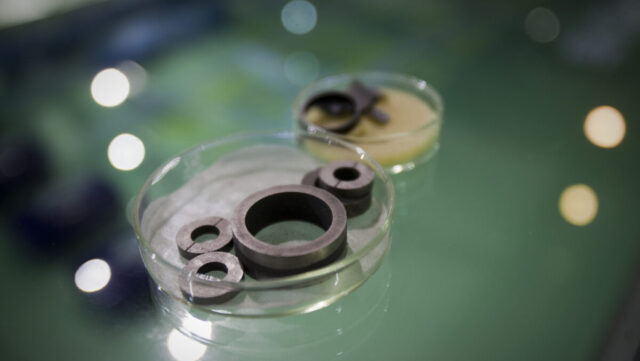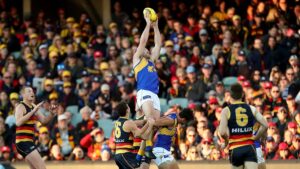- Rare earths companies are making more noise about heading downstream into metal and magnet making
- Lynas boss Amanda Lacaze warns strong partnerships will be needed for the West to break China’s stranglehold on the rare earth supply chain
- West African and DDH1 report strong profits
Speak to just about anyone in the rare earths game and they’ll tell you just how challenging it is to make a dent in a sector where China has so much control.
A planned economy of sorts, China worked early and quickly to ramp up its rare earths industry in recent decades.
Not only is it the main source of supply, but it holds key competencies seen in few other places around the world when it comes to turning rare earths oxides to metal and then to the magnets which wind up in EV motors and wind turbines.
We’ve begun to see bolder commentary of late about the prospects of rare earths producers to head further downstream.
Take Iluka Resources (ASX:ILU) for instance, which plans to turn a stockpile of monazite mineral sands waste kept at its Eneabba site for years into the feedstock for Australia’s first rare earths refinery, churning out around 4000t of NdPr a year.
It used its half-year financials last week to reveal the company was looking to head further downstream, commissioning a $15m study into the construction of a metallisation plant in WA.
Other players, notably leading rare earths miner Lynas (ASX:LYC), are fielding similar questions.
A tie-up with the US Department of Defence that will see US$258 million in funding thrown Lynas’ way to develop light and heavy rare earths separation facilities in Texas has some analysts’ tongues wagging about the potential it could go further downstream.
It comes as capital estimates ratcheted up today for Lynas’ Kalgoorlie cracking and leaching plant to $730m, with another $50m potentially to be capitalised for pre-commissioning and commissioning activities ahead of the site’s opening this financial year.
Mine to magnet a long term dream
Lynas is one of the few producers of rare earths of any scale outside China, and Lacaze warned how long the dream in the West of having a major mine to magnet producer had been.
“The first time (COO Pol Le Roux) saw a PowerPoint slide talking about mine to magnet was in, I think, 1999, yet we have not achieved it outside of China today and so, there are reasons for this,” she said.
“The competencies at each of the stages are actually quite different and it’s very easy to say well, let’s just do X or let’s just do Y, but frankly what you need to know and be good at to be good at mining is different from what you need to know and be good at to be good at the chemical-processing step which is essentially what we do.
“We’ll be doing in Kalgoorlie what we do in Malaysia. And then metallisation and magnet making bring in a different set of skills fundamentally from what you’ve got in your chemical-processing area.
“So it is absolutely the sort of thing that you can’t just wake up one day and say I’m going to be doing this. You need to look for good partners, skilled partners, people with the right sort of technical knowledge and expertise in those areas.”
That isn’t to say it can’t be done. Lacaze says Western companies need to form partnerships to compete with China and its quota-based production system.
“What we have done in the US is that we have selected a site where we will be able to accommodate both further downstream activity and recycling activity. If you have a magnet factory you need to be able to recycle your spa, and it’s unstable so you can’t be shipping it long distances and those sorts of things,” she said.
“We see this as a real opportunity and we are engaging with sort of relevant potential partners which may be a partnership that goes anywhere from supplier-customer partnership through to some sort of a joint venture and where we are actively engaged in that process as we speak.
“The success of developing an outside-China industry is important for all of us. Sometimes I think that the desire is to set up outside China operators as if they’re sort of competing with each other when in fact, the main game is China, right? That is our competition.
“For the rest of us, our success is going to be about building this outside-China industry. Otherwise, we simply produce material that ends up going into China for finishing and further value adding.
“So I think that we do need to work together in this area and we are certainly very focused on engaging with relevant potential partners on further developing downstream activities.”
Lynas reported a 43% drop in NPAT to $310.7m in FY23 as lower rare earths prices hit despite achieving a record in NdPr production in the second half of 2023.
It plans to hit a rate of 12,000tpa in 2025 via the Kalgoorlie development, developments at its LAMP facility in Malaysia and a $500m expansion of the Mt Weld mine and concentrator near Laverton in WA, one of the world’s largest individual sources of rare earths.
Lynas Rare Earths (ASX:LYC) share price today
Profits for West African, DDH1
It was not just the big dogs in the battery metals space reporting today.
West African gold producer … err … West African Resources (ASX:WAF) delivered a tidy profit on first half gold production of 113,009oz at an all in sustaining cost of $1169/oz.
That bankrolled $109.9m in cash flow, $309.7m in revenue and $82.4m in profit after tax, with $167m of cash and $24m of unsold gold in the bank at June 30.
There’s no dividend yet since the main game for WAF lies in expanding beyond its Sanbrado mine to develop the Kiaka project, also in Burkina Faso where from 2025-2032 it plans to produce over 400,000oz of gold a year.
WAF will produce 210,000-230,000oz at AISC of US$1175/oz in 2023.
READ: Diggers and Dealers: Who’s running as far as they can from investment bankers?
One company that will pay a dividend for FY23 is drilling stock DDH1 (ASX:DDH), which is flying towards a merger with mining services giant Perenti (ASX:PRN) later this year.
The largest standalone drilling company on the ASX, DDH1 saw revenue rise 8.6% to $550.4m in FY23, with operating EBITDA up 7.1% to $119.4m despite a minor 0.3% fall in margins.
Its NPAT rose 18.4% to $42.5m, backing a 1.96cps final dividend, fully franked, though that was 26% lower than the payout at the end of Y22.
The previous paid interim dividend had been 32.7% higher at 3.33cps.
MD Sy Van Dyk said DDH1’s performance had come in a “challenging operating environment” and “tight labour market”.
“Notwithstanding the short-term hurdles, we continued to strengthen the quality of our fleet, invest in our people, and position our business to benefit from long-term demand drivers. A highlight was the performance of Swick, which recorded its first full financial year as part of the DDH1 group. Swick continued to flourish and demonstrated significant operational and safety performance improvement,” he said.
“FY24 will be another transformative year for DDH1 and its stakeholders.
“The proposed merger with Perenti will create the ASX’s leading contract mining services group. The strategic fit between our group and Perenti is exceptional. Our combined expertise and service offering will provide additional value to clients and stronger growth opportunities for our businesses.
“Clients and employees stand to benefit from our shared commitment to safety, service excellent, innovation and sustainability. Following successful completion, I am looking forward with great enthusiasm to leading our strong brands under the new Perenti Drilling Services Division.”
DDH1 (ASX:DDH) and West African Resources (ASX:WAF) share prices today
You might be interested in












